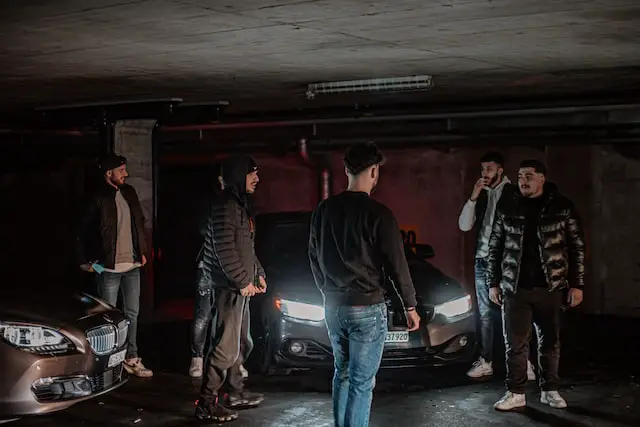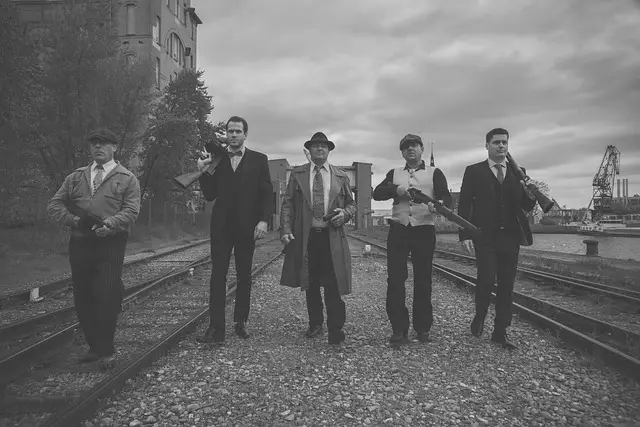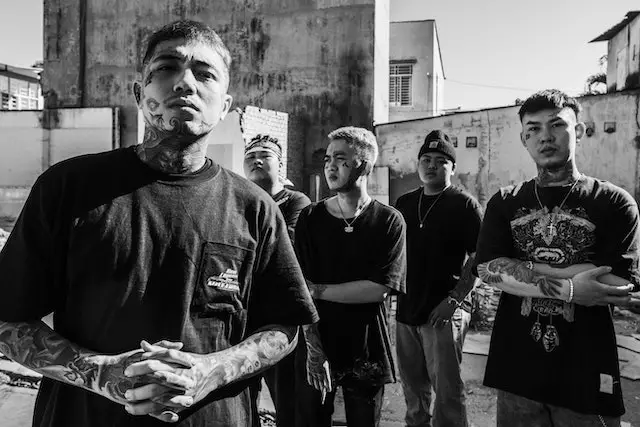A gang typically exists to commit minor crimes, while a mafia is an organized crime syndicate. Gangs are less organized than mafias and have more fluid membership requirements. While both may rely on violence or intimidation to get what they want, the scope of activities for each group remains different.
What is a gang?
(Photo By Kajetan Sumila on Unsplash)

A gang is a group of people who come together for a common purpose. They may have a leader, but they are not always organized. Gangs typically engage in criminal activity, such as violence, drug dealing, and theft.
What is a mafia?
(Photo By JEAN SEBASTIEN STAUDT from Pixabay)

A mafia is a type of organized crime that is typically associated with Italy and Sicily. They are organized crime groups. They have a hierarchical structure, with a clear chain of command. Mafias are involved in activities such as racketeering, money laundering, and murder.
Gangs Vs. Mafias – Key diffrences
In general, a gang is defined as a group of three or more people who interact together on a regular basis and share some common identifying characteristics, while a mafia is defined as an organized crime syndicate.
One of the primary differences between gangs and mafias is that mafias are far more organized than gangs. Mafias typically have hierarchies in place, with clear lines of authority and responsibility. This allows them to carry out larger, more complex criminal operations than gangs, which are typically less organized.
Another difference between gangs and mafias is that membership in a mafia is often much more exclusive than membership in a gang. To be a part of a mafia, one typically needs to have some kind of connection to the organization, such as family ties or political connections. Gangs, on the other hand, are often open to anyone who wants to join.
Finally, mafias tend to be considerably wealthier than gangs. This is due in part to the fact that they can engage in more sophisticated and profitable criminal activities than gangs. It is also due to the fact that membership in a mafia often confers status and prestige upon its members, which can attract wealthy individuals looking for social validation.
What do the mafias do?
They are involved in many criminal activities such as drug trafficking, loan sharking, extortion, prostitution and murder. They often have corrupt relationships with government officials and use their power to influence politics and the economy.
The 5 original mafias are the American Mafia, the Russian Mafia, the Chinese Mafia, the Japanese Mafia, and the Italian Mafia. These criminal organizations have a long history of violence and crime, and they are still active today. They are involved in a variety of illegal activities, including drug trafficking, extortion, and money laundering.
What are mafias like today?
Mafias today are very different from gangs. They are much more organized and operate more like a business. They are involved in many illegal activities, such as drug trafficking, extortion, and prostitution. They also have a strict code of conduct and typically require members to take an oath of loyalty.
Mafias typically have a strict code of conduct that members must adhere to. This code includes things like not cooperating with law enforcement, refraining from drug use, and avoiding criminal activity that would bring unwanted attention to the organization. Violating these rules can result in severe punishment, up to and including death. While gangs may occasionally fight each other over turf or territory, mafias typically do not engage in this type of violence.
What is the meaning behind gangs?
The answer to this question is not as simple as it may seem. There is no one answer that fits all gangs, as the motivations behind why people join gangs can vary greatly. However, some reasons for why people may join gangs include seeking protection, camaraderie, a sense of belonging, and/or power. Additionally, while some gangs are involved in illegal activities such as drug dealing or violence, others may not be involved in any criminal activity at all.
What are the five types of gangs?
There are five primary types of gangs that are typically identified by law enforcement: Street gangs, Motorcycle gangs, Prison gangs, Extremist/Terrorist organizations, and Organized crime groups.
Street gangs are the most common type of gang and are often involved in illegal activities such as drug dealing, robbery, assault, burglary, and auto theft.
Motorcycle gangs are less common than street gangs but can be just as violent. These gangs are often involved in illegal activities such as drug trafficking, extortion, and prostitution.
Prison gangs are usually made up of inmates who band together for protection or to further criminal activity.
Extremist/terrorist organizations use violence to achieve political or social goals. These groups often have an ideological belief system that is different from the mainstream population.
Organized crime groups are similar to street gangs but tend to be more sophisticated and have greater resources. These groups are involved in a variety of illegal activities including money laundering, racketeering, fraud, and human trafficking.
Why do kids join gangs?
There are many reasons why kids might join gangs. For some, it’s a way to belong to a group and feel like they have an extended family. For others, it’s a way to make money or gain power. Still others might join because they have friends in gangs, or because they feel like they have no other options.
Whatever the reason, gangs can be very difficult to leave once someone is involved. They can be dangerous places, and leaving can mean risking retaliation from gang members. It’s important to remember that gang membership is often not voluntary – many kids are forced into gangs against their will. If you know someone who is in a gang, try to get them help from a trusted adult or organization so they can get out safely.
Do gangs have rules?
Yes, gangs have rules. These rules are typically unwritten and understood by members through an initiations process or omertà. The purpose of these rules is to maintain order within the gang, protect the gang’s turf, and provide consequences for breaking the rules. Some examples of gang rules include:
-Don’t cooperate with law enforcement
-Don’t steal from other gang members
-Don’t reveal gang secrets
-Don’t disrespect other gang members
-Obey the leader’s orders
These rules are not always followed perfectly, which can lead to conflict within the gang. However, they provide a general framework for how gang members should behave.
Featured Image by Khoa Võ at Pexles.com









1 comment
Top site ,.. amazaing post ! Just keep the work on !